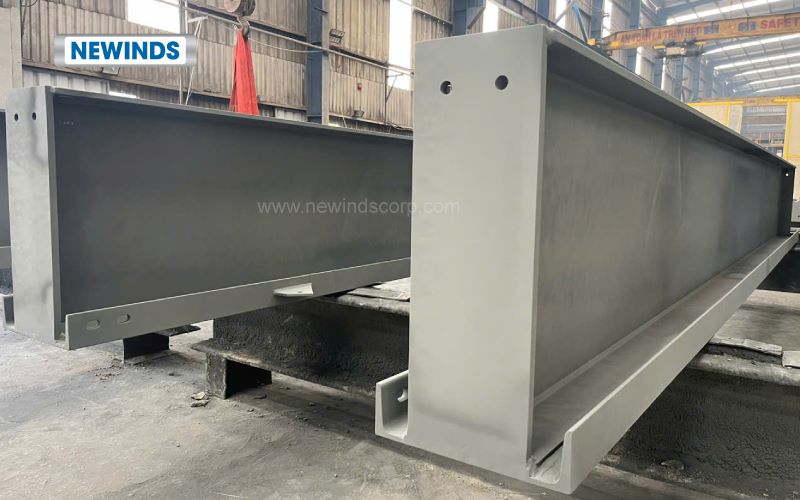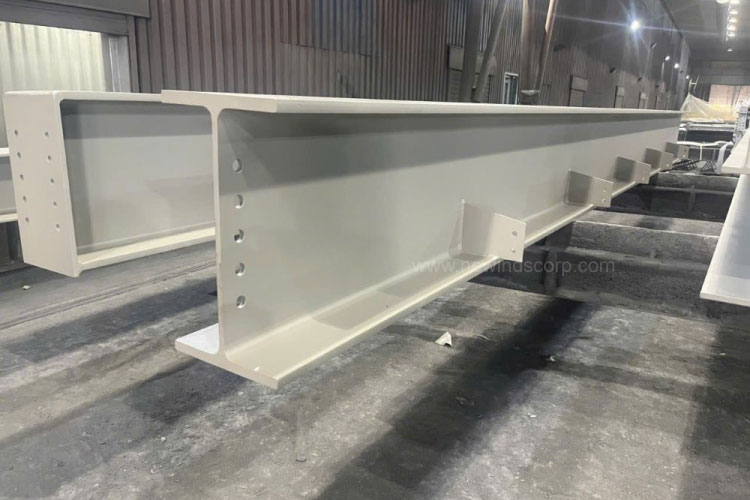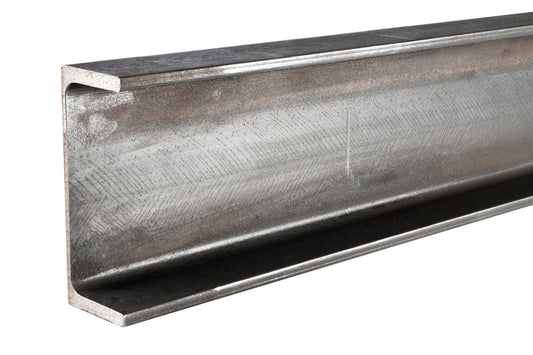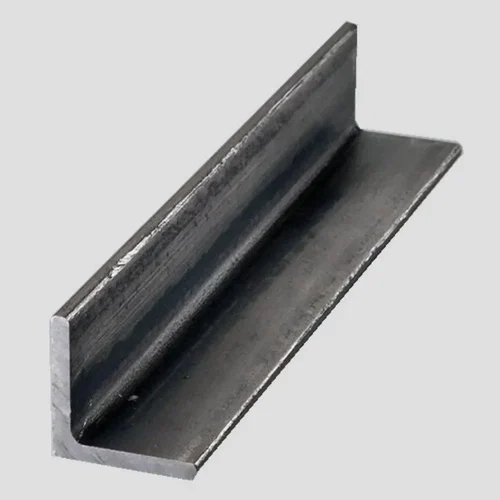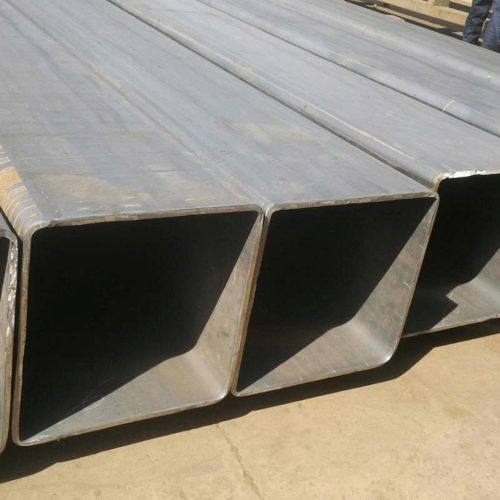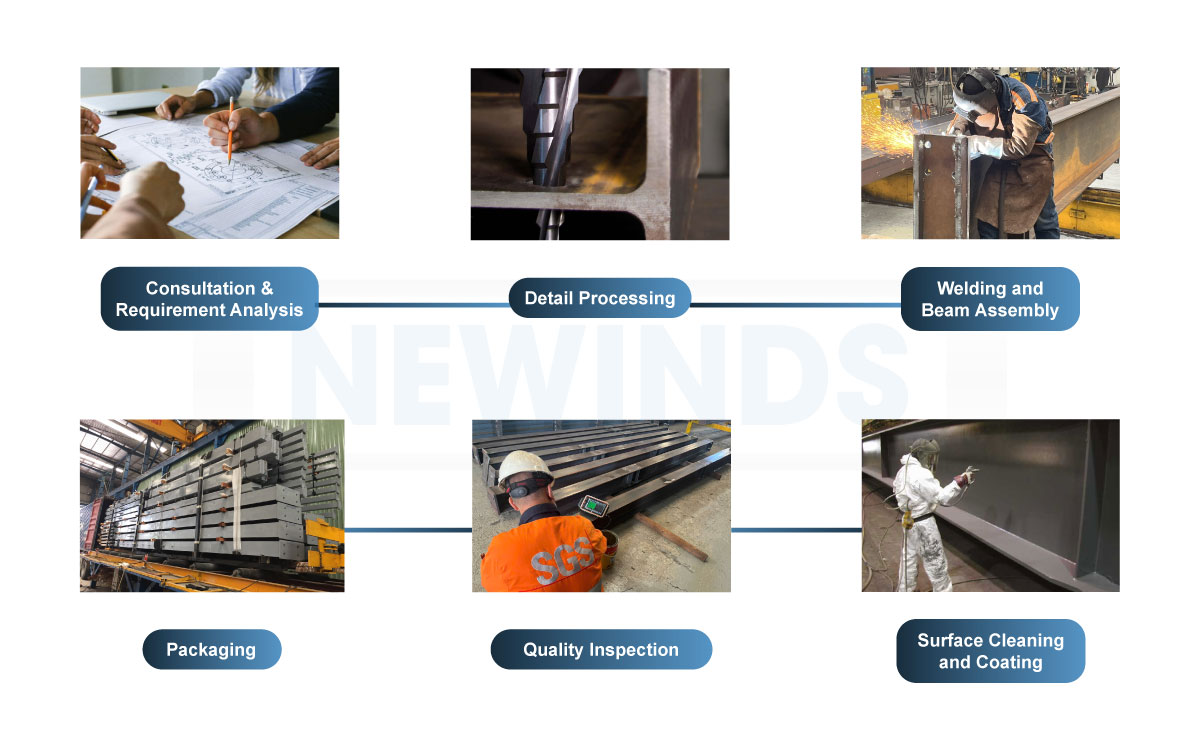Structural steel beams help bear loads and transfer them to the columns, which then distribute the loads down to the foundation and the ground. Depending on the type and function of the construction project, different types of steel beams may be selected, commonly including I-beams, H-beams, composite beams, built-up beams, and Z-purlin roof beams.
WHAT ARE STRUCTURAL STEEL BEAMS?
Structural steel beams are long steel components formed into specific steel shapes such as I-beams, H-beams, T-beams, and rectangular hollow sections. They are engineered to carry heavy loads and transfer structural loads from floors, roofs, and walls down to the foundation, ensuring the structural integrity and long-term stability of the building system.
These beams are commonly used as floor beams, roof beams, bridge girders, or in combination with steel columns to form space frames in projects such as pre-engineered buildings, commercial centers, and industrial plants. To maintain both safety and cost-efficiency, working with a trusted steel beam fabricator is essential, especially for projects with specific engineering requirements and tight budgets.
COMMON BEAM SHAPES
Based on technical requirements and design specifications, structural steel beams are classified into various types to meet the needs of different construction scenarios. Common examples include:
-
I-Beams
(W-Beams or H-Beams): These beams have an “I” or “H” cross-section. The wide flanges provide excellent bending resistance, while the web handles shear forces. They are widely used in factories, bridges, and high-rise buildings.
-
S-Beams
Similar to I-beams, these beams have narrower flanges and a slight taper on the inner edge. They are ideal for applications where high stiffness and compact design are needed.
-
C-Beams (Channel)
With a C- or U-shaped cross-section, these beams are used primarily for light-duty applications such as door frames or single-side supports.
-
Angle Beams (L-Beams)
Shaped like the letter “L”, they are typically used as bracing elements or for corner support where right-angle strength is required.
-
Rectangular/Square Hollow Structural Sections (HSS)
These hollow rectangular or square tubes offer a high strength-to-weight ratio, making them ideal for use as columns, compression members, or aesthetic structures.
Each beam type differs in structural performance and steel beam cost, so selecting the right design not only ensures safety but also helps optimize the budget.
STEEL BEAM FABRICATION PROCESS
A standardized steel beam fabrication process ensures structural integrity, precision, safety during erection, and long-term cost efficiency for both the steel beam fabricator and project investors.
-
Consultation and Requirement Analysis
Before fabrication begins, the engineering team receives and reviews structural drawings from the investor or design consultant. In this step, they analyze:
- The type of beam required (I-beam, H-beam, built-up beam, etc.)
- Detailed dimensions (height, width, web thickness, flange thickness)
- Load requirements (bending, shear, compression)
Any unclear details or additional client requirements must be clarified at this stage. Misunderstandings at this point can negatively impact product quality, delay construction timelines, and harm long-term business relationships.
-
Detail Processing: Drilling, Punching, Plate Connection
This stage focuses on processing key steel components such as bolt holes, connection plates, and stiffeners according to the approved design.
- For built-up beams, steel plates are temporarily tacked before welding
- Joint positions are carefully inspected to prevent misalignment during erection
-
Welding and Beam Assembly (if required)
In projects that require built-up beams, cut steel plates are welded together to form the desired section shape (I, H, box, etc.).
- Welding is performed by certified welders or automatic welding machines
- Welds are inspected using ultrasonic or magnetic particle testing to ensure no cracks or voids are present
Accurate assembly ensures durability and safety, especially for large-scale structures or long-span frames.
-
Surface Cleaning and Coating
The beams are cleaned thoroughly using sandblasting, then coated with anti-corrosion paint or hot-dip galvanized as required by the installation environment. Proper surface treatment increases the lifespan and visual quality of the steel beam.
-
Quality Inspection and Packaging
Finally, steel beams are subject to a comprehensive inspection covering:
- Dimensions, straightness, and thickness
- Weld quality and hole positions
- Material certification (CO/CQ)
Steel beams must be packaged properly according to technical transport standards. The packaging method depends heavily on the investor’s requirements and the regulations of the destination country.
STANDARD SIZES OF STEEL BEAMS
When fabricating structural steel beams, it’s crucial to follow industry-standard dimensions to ensure consistency and compatibility on construction sites. This is especially important for export-oriented projects that must comply with international standards such as American Standard (ASTM), European Standard (EN), British Standard (BS), or Australian Standard (AS/NZS), among others.
I-beams are typically defined by the following key dimensions:
- Beam height (measured from the outer top flange to the outer bottom flange)
- Flange width
- Web thickness
- Flange thickness
For example, a W24x76 beam under American standards indicates a wide-flange beam approximately 24 inches in height and weighing 76 pounds per linear foot.
To ensure your structural steel beams meet both dimensional and quality steel standards, it is essential to work with a skilled and reliable steel beam fabricator. A qualified fabricator can offer custom solutions, professional guidance, and accurate cost estimation. This helps control steel beam cost while ensuring proper load performance and compliance with design specifications.
Partnering with the right steel beam fabricator also means you get up affordable steel beam prices, minimize waste, and receive beams tailored exactly to your project’s needs.
If you need a high-quality steel beam fabricator offering custom structural steel beams that meet international standards.
Contact Newinds:
- Email: sales@newindscorp.com
- Phone/Whatsapp/Zalo: Ann Yen +84 868 482 038
